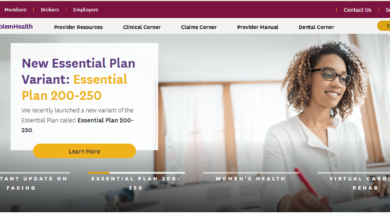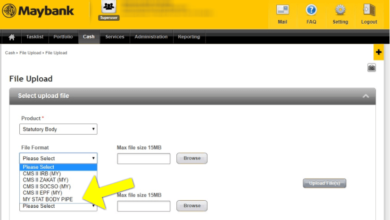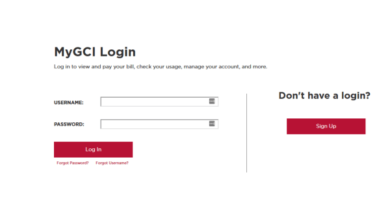DLP Meaning and Why Data Loss Prevention Software Matters Today

In a world where data breaches and insider threats are rising at an alarming rate, safeguarding sensitive business information is no longer optional—it’s essential. This is where Data Loss Prevention Software comes in. From protecting intellectual property to maintaining regulatory compliance, DLP tools have become critical to modern workplace security strategies. But what exactly is DLP, and why should businesses care?
Let’s dive into the DLP meaning, explore its benefits, and understand how data loss prevention software is reshaping digital security.
What is Data Loss Prevention Software?
To put it simply, Data Loss Prevention Software (DLP) refers to a set of tools and processes that ensure sensitive or confidential information does not leave the organization’s network—either intentionally or accidentally.
DLP Meaning in Action
The term “DLP” stands for Data Loss Prevention, and its core purpose is to monitor, detect, and block potential data breaches. Whether it’s an employee emailing confidential files to a personal account or uploading sensitive documents to unauthorized cloud storage, DLP software steps in to prevent such incidents in real time.
This technology is especially vital today, where hybrid work models and remote access make data security more complex than ever before.
Key Features of Data Loss Prevention Software
Modern DLP software isn’t just about preventing data leaks—it’s about enabling smarter management and real-time control. Here are the key features that make it indispensable:
1. Insider Threat Prevention
Employees can unintentionally or maliciously expose sensitive data. DLP tools monitor activities like file transfers, downloads, and print commands, helping organizations detect and block threats from within.
2. User Behavior Analytics (UBA)
By analyzing user behavior, DLP solutions can identify unusual patterns—such as access to large volumes of data at odd hours—and flag them for investigation.
3. Continuous Data Monitoring
Real-time scanning of emails, USB transfers, endpoints, and cloud platforms ensures round-the-clock protection. DLP software categorizes and protects data based on sensitivity levels.
4. Employee Monitoring
Some DLP tools offer visibility into employee actions, especially in industries where data handling is critical. This not only increases accountability but also boosts productivity.
5. Automated Policy Enforcement
Admins can set policies to automatically block, quarantine, or encrypt data based on pre-defined rules. This hands-off approach reduces manual errors and ensures consistency.
Benefits of Using DLP Software
Implementing DLP software brings a range of advantages that go beyond just security.
1. Prevents Both Malicious and Accidental Data Loss
Not all data breaches are caused by cybercriminals. Many stem from simple mistakes like sending an email to the wrong recipient. DLP software detects such errors before they happen.
2. Enhances Trust and Reputation
Avoiding data breaches means customers and partners can trust you with their information—something that’s priceless in today’s privacy-focused world.
3. Reduces Financial Risk
According to IBM, the average cost of a data breach in 2023 was $4.45 million. DLP tools drastically reduce the risk and cost associated with such incidents.
4. Improves Productivity
With automation, real-time alerts, and fewer manual security checks, employees can focus more on their core tasks rather than worrying about data protocols.
Compliance, Privacy & Legal Considerations
Data privacy laws are tightening worldwide. From GDPR in Europe to HIPAA in the U.S. healthcare sector, businesses must demonstrate due diligence in protecting personal information.
DLP software helps organizations:
- Monitor and secure Personally Identifiable Information (PII)
- Control access to customer and employee data
- Generate audit trails for legal compliance
Is It Legal to Use DLP Software?
Yes—but with responsibility. Organizations must notify employees of monitoring practices and follow ethical guidelines. Transparency and consent are key to ensuring legal compliance and maintaining workplace trust.
Use Cases Across Industries
DLP isn’t one-size-fits-all. Here’s how it adapts to different sectors:
| Industry | Use Case |
| Healthcare | Preventing leakage of patient records and complying with HIPAA regulations. |
| Finance | Blocking unauthorized transfers of customer banking and credit information. |
| Education | Protecting student databases, research files, and faculty information. |
| Law Firms | Securing legal documents, client communications, and contracts. |
| Tech & Startups | Safeguarding proprietary code, designs, and intellectual property. |
How to Choose the Right Data Loss Prevention Software
Selecting the best solution depends on your organization’s size, infrastructure, and risk level. Here are some criteria to consider:
- Scalability: Can it grow with your organization?
- Integrations: Does it support your existing platforms like Microsoft 365 or Salesforce?
- User-Friendliness: Is the interface intuitive for admins and users?
- Reporting Capabilities: Are the analytics clear and actionable?
Be sure to request demos, trial versions, and customer reviews before committing.
Implementation: Best Practices
Rolling out DLP software successfully requires a strategic approach:
- Audit Your Data: Identify what data is sensitive and where it’s stored.
- Define Policies: Set clear rules for what constitutes a data violation.
- Train Employees: Awareness and training can prevent most accidental leaks.
- Test and Optimize: Use pilot groups and refine your setup based on performance.
- Monitor and Update: Keep your policies and tools aligned with evolving threats.
Trends and Future Outlook
The future of data loss prevention software is exciting and dynamic. Here are a few trends reshaping the landscape:
- AI & Machine Learning: These technologies are being integrated into DLP for predictive threat detection and behavior forecasting.
- Cloud-native DLP: As businesses move to the cloud, DLP tools are adapting to cover SaaS platforms like Google Drive and Dropbox.
- Zero Trust Architecture: DLP is becoming a key component in the shift to “never trust, always verify” security models.
According to Gartner, by 2026, 60% of enterprises will have adopted DLP solutions that integrate AI-driven user behavior analytics to improve risk detection and response.
Conclusion
Understanding the DLP meaning is just the first step toward protecting your business’s most valuable asset—its data. With data loss prevention software, organizations can prevent breaches, stay compliant, and foster a culture of security and trust.
From insider threats to unintentional errors, DLP tools are the silent guardians of digital workplaces, offering peace of mind in an era of increasing data complexity.
Now’s the time to invest in a solution that protects not just your files—but your future.




